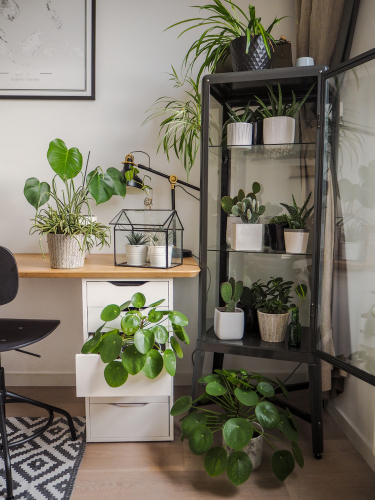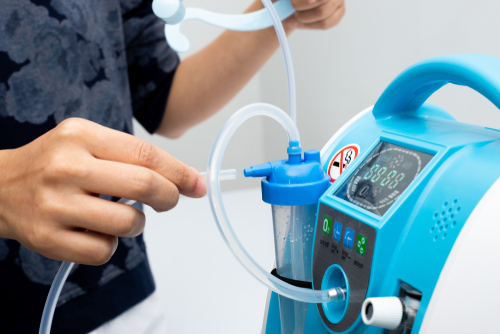There is no question that implementing a “Green New Deal” will destroy our economy without delivering tangible benefits to the environment.
It is, and always will be up to us as individuals to take meaningful steps towards energy independence and reduction of dependence on commercial based polluters. Unfortunately, the vast majority of people aren’t willing to try, let alone explore simple steps to achieving home based energy independence.
This Device Easily Turns Air Into Water!
Smog and other forms of air pollution are contributing to dramatic rises in asthma, pulmonary cancers, and other breathing disorders. At the same time, we, as a nation, are ever up against threats from terrorists and hostile nations that may strike at any moment. Depending on the devices used, being able to control air quality in your home or bug out location may mean the difference between life and death. Unlike other things that you put in place for a major social disruption scenario, you can start reaping the health benefits immediately when you take steps to control air quality in your home. Here are some ideas to help you get started.
Plants: A Natural Air Cleaner?
According to a study[1] conducted by NASA, certain houseplants, and the bacteria in the potting soil these plants grow in, are effective at removing some of the most dangerous pollutants from the air we breathe. These tests were done in completely sealed chambers, which means there was less air exchange than what you would have in the average room. Tests carried out by other researchers in non-sealed rooms showed the plants were less useful.
That being said, if you are concerned about air quality during a nuclear event, then you will more than likely be creating a room that has minimal, if any air exchange with the outside world. While these plants may not solve all your immediate air cleaning needs, they can still be useful in an emergency where you are in a completely sealed room.
Even though there are thousands of chemicals in the air, NASA focused on just three:
- Benzene is found in a number of household items that include things made of plastic and rubber. It is also found in some inks, gasoline, and paint. Benzene is also used as part of manufacturing processes for dyes, detergents, and medical drugs.
As useful as Benzene is, it has also been linked to leukemia, birth defects, liver damage, kidney damage, and mental problems. These health problems can occur even when Benzene is present at very low levels.
According to the Nasa Clean Air Study, some of the best plants for removing Benzene include English Ivy, Pothos Plant, Peace Lily (removes all toxins in the study), Bamboo Plant, Snake Plant/Mother-in-Law’s Tongue, Florist’s Chrysanthemum (also removes all toxins in the study), and Aloe Vera.
- Trichloroethylene is used primarily for dry cleaning and removing grease from metals. It is also used in paints, inks, varnish, lacquer, and adhesives. Research shows that it causes liver cancer in mice. It is likely to cause liver cancer in humans as well.
English Ivy, Peace Lily, Florist’s Chrysanthemum, Boston Fern, and Spider Plants are some of the best for removing Trichloroethylene from the air.
- Formaldehyde is used in foam insulating boards, particle board for furniture, wax paper, paper grocery bags (so much for paper bags being better for the environment and human health!), tissues, paper towels, household cleaners, cigarette smoke, carpet backing, water repellents, and permanent press garments. Formaldehyde is classified as a Volatile Organic Compound and is linked to increased rates of asthma and certain kinds of throat cancer. It is usually found in higher concentrations indoors because of reduced air circulation.
Plants that can remove formaldehyde from the air include Peace Lily, Florist’s Chrysanthemum, Boston Fern, English Ivy, and Aloe Vera.
Activated Carbon Filters
As with cleaning water, activated carbon is a primary means for removing chemical pollutants from the air. When paired with robust air flow from a central air system fan or box fans, you will notice a significant reduction in both odors and health problems associated with air pollution. There are several brands of activated carbon filters on the market, including ones that also include media for filtering out air particles such as dander, bacteria, dust, and mold spores.
Choosing a Particulate Matter Filter
Aside from cleaning chemical toxins from the air, it is also important to remove particulate matter. If you go by the MERV system[2], the higher the number, the more particles the filter will remove from the air. On the flip side, higher MERV numbers also mean less air will flow through the filter, and it will also clog up faster with debris. Here are some things that I found give the best coverage:
- Go no higher than a MERV 10 or 11 in central heating systems unless you have a fan on the system that is strong enough to use with higher filter ratings. Use an activated carbon pre-filter that has a lower MERV rating. This will increase the filter’s surface area and also help catch larger particles that will clog up higher rated filters.
- For box fans, you can go as high as you want, however, MERV 12 – 13 work best. Set the fans on high and use an activated carbon pre-filter.
UV Light Systems
Higher rated particulate matter filters will also remove bacteria, fungi, mold, and other pathogens from the air. Unfortunately, to remove all pathogens, you will need a MERV 16 or above. These filters are expensive and will also create an unacceptable reduction in air flow. This is just one of many reasons why you might want to use a UV light system instead.
Basically, as air circulates past the UV light, it will kill off pathogens. These systems have a few drawbacks including increased risk of fire, and can damage your eyes (or those of your pets) if you look at them.
Ozone Generators
Basically, ozone generators emit ions that are attracted to dust, pathogens, and other forms of particulate matter. While they may seem like the perfect answer to many problems, ozone itself can cause breathing problems and illness. Therefore, even if you purchase a system that actually works, it may do more harm than good.
What About Nuclear Radiation?
As far as we know, air molecules cannot become radioactive. Rather, it is dust particles that travel away from a nuclear event that carry ionizing radiation with them. Therefore, when it comes to providing a radiation free air supply, you will need MERV 20 filters.
Under normal circumstances, a box fan will effectively filter air and provide plenty of circulation. When it comes to nuclear radiation, however, leaks around the filters can be deadly. You will either need to purchase a dedicated air purifier that is built to prevent air leaks, or build a suitable frame behind the box fan that will eliminate leaks.
The system will also have to be built into a wall or other structure so that air can only come in via the filter. Needless to say, you will need to seal off all other possible air entrances, including leaks around windows, doors, and foundations.
Oxygen Production
Chances are, you already know that plants provide oxygen. Unfortunately, the actual number of plants that you will need to produce enough oxygen for one person is staggering (between 300 and 500 houseplants[3]). Unless you decide to grow your own food indoors and are able to fit enough plants into each room, this isn’t a viable option let alone a good use of space. Even with the use of vertical garden racks and hydroponic growing methods, it is not likely you will be able to get enough oxygen using just plants. They can help, but you will still need mechanical means.
Today, there are many oxygen concentrators on the market that basically take oxygen from room air and deliver it in a smaller volume. While these devices are plentiful and have come down in price, they will not do you much good. If there is little or no oxygen in the room, they cannot deliver what isn’t there.
On the other side of the equation, actually making oxygen is a difficult and expensive process. There are two options. First, you can use electrolysis to break water into hydrogen and oxygen. Claims that this can be done at home without using chemicals that cause more problems are dubious at best. Second, there are some emerging technologies that use lasers to break CO2 into carbon and oxygen. While it is easier to break CO2 into carbon monoxide and oxygen, the deadly nature of carbon monoxide is problematic at best.
Keeping yourself safe from air contaminated by pathogens, chemicals, and particulate matter can be a complicated task. Using the right filters will be very important, as will ensuring you have a high rate of air flow in each room. When it comes to more complex situations like providing oxygen in an enclosed room, you may find that you will still need to bring air in from the outside and then make sure it is properly filtered.
Resources
[1] https://ntrs.nasa.gov/archive/nasa/casi.ntrs.nasa.gov/19930073077.pdf
[2] www.mechreps.com/PDF/Merv_Rating_Chart.pdf
[3] https://io9.gizmodo.com/how-many-plants-would-you-need-to-generate-oxygen-for-y-5955071











































































Very nice article! Recently I was writing a thesis on this topic, but I couldn`t cope up with it, so I decided to order it. The site WritingJudge helped me choose a reliable service for me paper.
I can say from myself that now it is definitely worthwhile to refer to interesting materials concerning just the same writing of an essay. Many do not know where to learn about it. I am very glad that I was able to find here information about how to write an essay and other written works, how to start and finish them, so that it was effective and immediately attract the reader. These are important skills that are gained by experience, so that he was successful you need to read and additional literature. Therefore, I recommend to look at and read, I hope I could help!